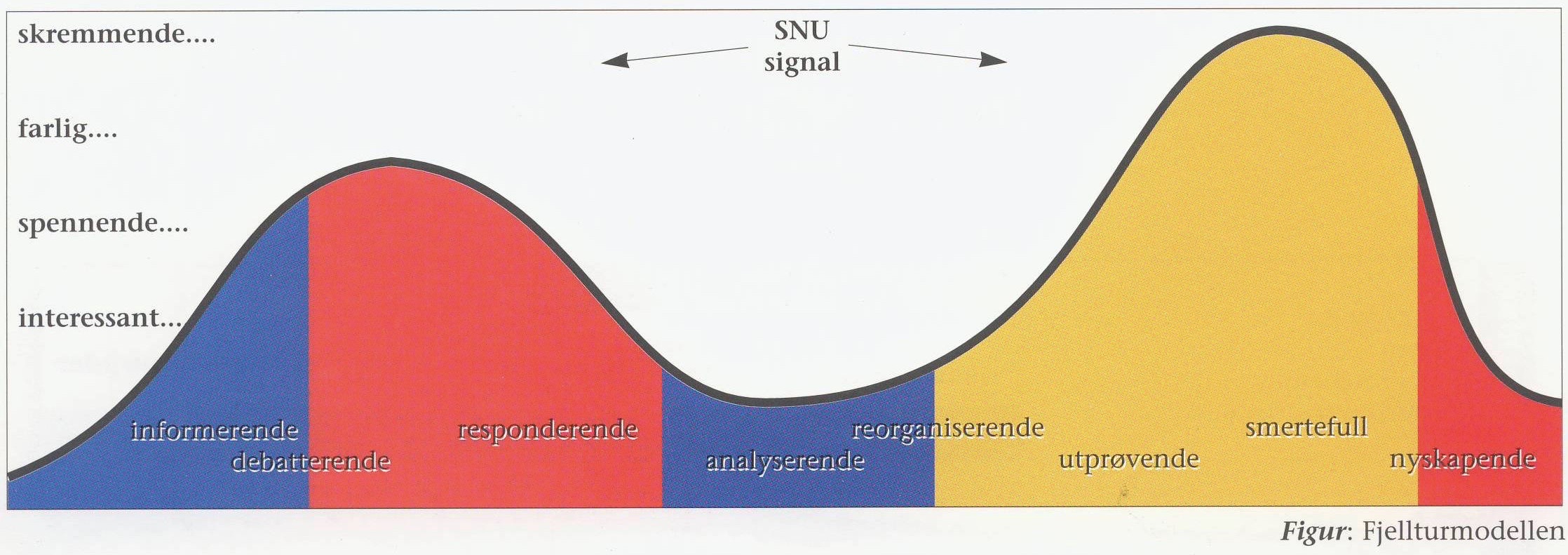The hidden agenda
BEING in the mountains means climbing peaks. You often start a little cautiously, but climb higher and steeper as your courage and experience increase. It’s all a process, both on the external physical level, and in the inner arena of uncertainty, unrest, fear and resistance before you gain the courage and desire to take on bigger and more difficult tasks.
In the “mountain hike model”, these phases are marked with blue and red keywords such as: Interesting, Exciting, Dangerous and Scary. – The last is a clear warning and a clear turn around signal, or as the Norwegian mountaineering rules say: “There is no shame in turning around!”
RESISTANCE and retreat are therefore right and natural. Denying the warnings and continuing ahead often ends in both defeat and catastrophe. – In the mountains we seek shelter and warmth, food and evaluation in a log cabin at the bottom of the valley. Here we are given time for doubt and faith and thoughts and suggestions for the next step.
Change can be so hard.
That’s why care for health, environment, and family is not just a private matter — in a knowledge-based company, it’s a direct driver of success.
The“mountain hike model” shows how hidden emotional pressure during change processes — like “carrying too much” or “wounds that haven’t healed” — can lead to people falling behind before they even begin.
Things that haven’t been dealt with properly can suddenly reappear when new processes trigger old wounds or forgotten memories — often during late hours or after long days. Situations from the past can be reactivated by new experiences, leading to overreactions and emotional outbursts. This often leaves people feeling ashamed or hurt. It’s not easy to get back on your feet afterward. Some never do.
That’s why it’s important to establish rituals for letting go, for closure, and for acknowledging when it’s time to move on — rather than letting things fester or “embalm” into lifelong pain.





